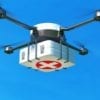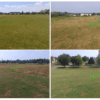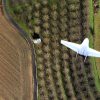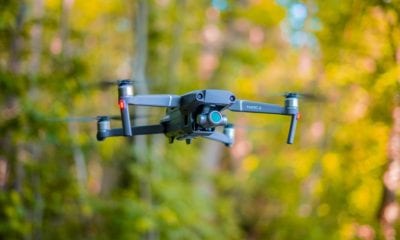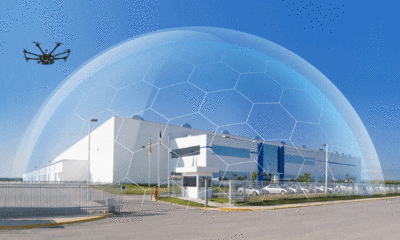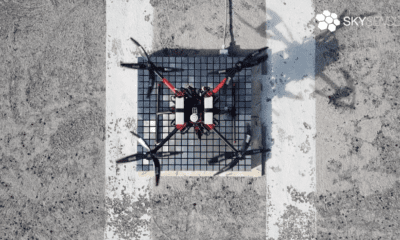AI
Drones for Humanitarian Aid
Drones capturing images of disaster-struck areas and assessing the damage done are not anymore a picture that we see in the best hi-tech movies. They are also perfect for delivering blood and medical supplies to areas cut off by seasonal floods – and a concept that is emerging in remote areas.
The truth is, the use of drones in humanitarian action is a rapidly emerging field right now. Aspects such as mapping, monitoring and damage assessments to delivering items to remote or otherwise inaccessible locations are crucial in the development of this field.

Children look on as the United Nations Children’s Fund and the Government of Malawi test the use of unmanned aerial vehicles to reduce waiting times for infant HIV tests. Credit: UNICEF/Khonje
Drones for Humanitarian/Development Projects Open up Space for Innovation and Partnerships
Therefore, many experts have already classified this form of drones as innovative and potentially in for:
- Opening up new space for innovation
- Creating partnerships between clients, service providers and public authorities
- Developing missions for drones that gain support from all parties involved
According to the ‘2016 Agenda for Humanity of the United Nations Secretary General’, collective outcomes by drones in this field must be properly addressed. In other words, the humanitarian sector must promote a strong focus on innovation in order to promote this use of drones.
When it comes to humanitarian and aid workers, almost all of them praise the use of drones in such specific scenarios – used for area assessment and monitoring as well as being able to access and deliver to hard-to-reach locations. Still, some worry about the drones arriving too late onsite to provide useful information, which remains a challenge in this field.

MONUSCO Photos – A team of technicians prepares for the inaugural flight of an Unmanned/Unarmed Aerial Vehicles (UAV) in Goma, North Kivu province, during an official ceremony organized in the presence of USG for Peacekeeping Operations, Herve Ladsous, on 3 December 2013.
Africa is Among the First Continents to Boost the Use of Drones in this Field
The African country of Rwanda has been one of the first examples for a drone medical delivery system at a national scale – which started off in 2016 as a partnership between the Silicon Valley-based robotics company Zipline and the Rwandan government, where drones delivered blood to 12 regional hospitals from a base in eastern Rwanda, synchronized in a specific and direct system.
As you can see from this example, the introduction of drone deliveries has helped in introducing a cheaper and a more demand-responsive system and preventing stockouts at local facilities while minimizing waste.
It seems like Africa is keeping up with this drone-related initiative, though. In 2017, the Government of Malawi and UNICEF launched Africa’s first humanitarian drone corridor with a radius of 40 kilometers and a total area of more than 5,000 m2 – and a main aim to provide a controlled high altitude flight testing platform for private sector, institutions, NGOs and other partners.
The Lessons Learned From the Use of Drones in This Field
There are many lessons one can learn from the use of drones in this field – humanitarian and development projects. For one, they demonstrate an innovative technology that is tailored to solve specific problems. On top of that, it is a technology that is beneficial to all parties and emerging, thus strengthening the local economy.
The only challenges that remain are the policies set up by authorities. Even though some international aviation authorities have began developing regulatory frameworks in this field, the pace of adoption will be influenced by the further policies and regulations set within the next few years.
All in all, if drone use is to scale up, it definitely has to be objectively safe from the perspective of regulators – not to mention the perspective of the general public.
Drones have been widely adopted as a vital part of humanitarian response with plans to expand their use:
- Doctors Without Borders / MSF-USA (2017) – The use of drones as surveillance tools and bomb-dropping machines leads to widespread apprehension about the technology in humanitarian circles, including within Doctors Without Borders/ Médecins Sans Frontières.
- Drones Doing Disaster Relief in Nepal (US, 2017) – A Canadian company’s drone technology is helping with disaster relief in Nepal.
- How A Hospital Drone Delivery Service Is Saving Lives In Rwanda (2016) – In Rwanda, the American startup Zipline has partnered with the government to launch the world’s first commercial drone delivery service, ferrying vital medical supplies to its far-flung hospitals by air.
- UAV participative mapping in Haiti - COSMHA / CartONG / OSM (2014) – Since 2010, the free and collaborative OpenStreetMap mapping community has been growing in Haiti. Backed up by the global OSM community and using innovative tools like Unmanned Aerial Vehicles (UAV), it keeps improving in order to meet the challenges of tomorrow.
- Balkan floods (2014) – locate mines displaced by the flood
- Nepal earthquake (2015) – disaster relief
- Drones vs. California's wildfires: How they're helping firefighters – Fire departments are turning to drones to help spot dangerous fire conditions from the sky and document the devastating aftermath once the fire has passed through.
- This Drone is Designed to Save Lives Then Disappear (Philippines, 2013) The Everfly APSARA drone is an origami-like disposable drone made to deliver essential supplies in a humanitarian or disaster situation.
- Self-flying drones in disaster zones: BYU engineers help design safer structures – A BYU team, led by BYU professors Kevin Franke (civil engineering) and John Hedengren (chemical engineering), has developed a program that will allow a drone to map its own route and fly independently to image an entire city.



